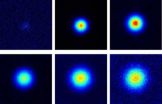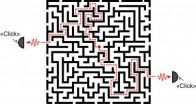(Press-News.org) DALLAS – Dec. 20, 2012 – UT Southwestern Medical Center researchers have pinpointed a molecular mechanism needed to unleash the heart's ability to regenerate, a critical step toward developing eventual therapies for damage suffered following a heart attack.
Cardiologists and molecular biologists at UT Southwestern, teaming up to study in mice how heart tissue regenerates, found that microRNAs – tiny strands that regulate gene expression – contribute to the heart's ability to regenerate up to one week after birth. Soon thereafter the heart loses the ability to regenerate. By determining the fundamental mechanisms that control the heart's natural regenerative on-off switch, researchers have begun to better understand the No. 1 hurdle in cardiovascular research – the inability of the heart to regenerate following injury.
"For the first time since we began studying how cells respond to a heart attack, we now believe it is possible to activate a program of endogenous regeneration," said Dr. Hesham Sadek, assistant professor of internal medicine in the division of cardiology, and the senior author of a study in the Proceedings of the National Academy of Sciences.
Each year, nearly 1 million people in the United States have a heart attack, while about 600,000 die of cardiovascular disease annually. Heart disease is the leading cause of death in both men and women, according to figures from the Centers for Disease Control and Prevention.
As researchers worldwide strive to find ways that help the human heart cope with myriad illnesses and injuries, scientists at UT Southwestern have focused their attention on the heart's regenerative capabilities. In 2011, a team led by Dr. Eric Olson, chairman of molecular biology, and Dr. Sadek demonstrated that within three weeks of removing 15 percent of the newborn mouse heart, the organ was able to completely grow back the lost tissue, and as a result looked and functioned normally.
In the latest investigation, UTSW researchers found that hearts of young rodents mounted a robust regenerative response following myocardial infarction, but this restorative activity only occurs during the first week of life. They then discovered that a microRNA called miR-15 disables the regenerative capacity after one week, but when miR-15 is blocked, the regenerative process can be sustained much longer.
"It is a fresh perspective on an age-old problem," said Dr. Olson, director of the Nancy B. and Jake L. Hamon Center for Basic Research in Cancer, and the Nearburg Family Center for Basic and Clinical Research in Pediatric Oncology who is a co-corresponding author of the PNAS study. "We're encouraged by this initial finding because it provides us with a therapeutic opportunity to manipulate the heart's regenerative potential."
Further research will be needed to optimize the ways in which medical scientists, and eventually clinicians, may be able to control this regenerative process.
"This may well be the beginning of a new era in heart regeneration biology," Dr. Sadek said. "Our research provides hope that reawakening the regenerative capacity of adult mammalian hearts is within reach."
INFORMATION:
Other UT Southwestern investigators involved in the study are Dr. Beverly Rothermal, associate professor of internal medicine; Dr. Pradeep Mammen, assistant professor of internal medicine; Dr. Diana Canseco, postdoctoral researcher II of internal medicine; David Grinsfelder, research associate of internal medicine; and Brett Johnson, student research assistant of molecular biology. Former UTSW researchers involved are Dr. Ahmed Mahmoud, now at Harvard Medical Center; lead author Dr. Enzo Porrello, now at the University of Queensland in Australia; and Emma Simpson, research assistant in pathology.
MiRagen Therapeutics, a biotechnology company co-founded by Dr. Olson and others, is working to develop a new class of microRNA-based therapeutics to enhance heart repair by modulation of miR-15 and other microRNAs.
The study was funded by the National Institutes of Health, the American Heart Association, the National Heart Foundation of Australia, the Leducq Foundation, the Donald W. Reynolds Center for Clinical Cardiovascular Research, and the Robert A. Welch Foundation.
This news release is available on our World Wide Web home page at
www.utsouthwestern.edu/home/news/index.html
To automatically receive news releases from UT Southwestern via email,
subscribe at www.utsouthwestern.edu/receivenews
Research pinpoints key gene for regenerating cells after heart attack
2012-12-20
ELSE PRESS RELEASES FROM THIS DATE:
Shedding light on Anderson localization
2012-12-20
This press release is available in German.
Waves do not spread in a disordered medium if there is less than one wavelength between two defects. Physicists from the universities of Zurich and Constance have now proved Nobel Prize winner Philip W. Anderson's theory directly for the first time using the diffusion of light in a cloudy medium.
Light cannot spread in a straight line in a cloudy medium like milk because the many droplets of fat divert the light as defects. If the disorder – the concentration of defects – exceeds a certain level, the waves are no longer ...
Small wasps to control a big pest?
2012-12-20
With the purpose of developing new biological methods to control one of the major pests affecting the southwest Europe pine stands, a joint collaboration leaded by the Instituto Nacional de Investigação Agrária e Veterinária, Portugal (R. Petersen-Silva, P. Naves, E. Sousa), together with the Universidad de Barcelona, Spain (J. Pujade-Villar) and a member of the Museum and Institute of Zoology from the Polish Academy of Sciences, Poland, (S. Belokobylskij) initiated a research to detect the parasitoid guild of the Pine Wood Nematode (PWN) vector, Monochamus galloprovincialis ...
Sync to grow
2012-12-20
From a single-cell egg to a fully functional body: as embryos develop and grow, they must form organs that are in proportion to the overall size of the embryo. The exact mechanism underlying this fundamental characteristic, called scaling, is still unclear. However, a team of researchers from EMBL Heidelberg is now one step closer to understanding it. They have discovered that scaling of the future vertebrae in a mouse embryo is controlled by how the expression of some specific genes oscillates, in a coordinated way, between neighbouring cells. Published today in Nature, ...
Silver sheds light on superconductor secrets
2012-12-20
The first report on the chemical substitution, or doping, using silver atoms, for a new class of superconductor that was only discovered this year, is about to be published in EPJ B. Chinese scientists from Institute of Solid State Physics, Chinese Academy of Sciences, Hefei, discovered that the superconductivity is intrinsic rather than created by impurities in this material with a sandwich-style layered structure made of bismuth oxysulphide (Bi4O4S3).
Superconductors with a transition temperature (TC) above the boiling temperature of liquid nitrogen (77 kelvins or −196 ...
Gene expression improves the definition of a breast cancer subtype
2012-12-20
The study conducted by the Vall d'Hebron Institute of Oncology (VHIO) in conjunction with the GEICAM cooperative group and other American and Canadian researchers has led to a change in the definition of hormone-sensitive breast tumours.
Barcelona, 20 December 2012. Gene expression in breast cancer provides valuable biological information for better determining the diagnosis, treatment, risk of relapse and survival rate. However, the most common form of characterizing breast cancer is by histopathological techniques. This study, headed by Dr Aleix Prat, Head of the Translational ...
2 problems in chemical catalysis solved
2012-12-20
The research group of Professor Petri Pihko at the Department of Chemistry and the NanoScience Center of the University of Jyväskylä has solved two acute problems in chemical catalysis. The research has been funded by the Academy of Finland.
In the first project, the researchers designed a novel intramolecularly assisted catalyst for the synthesis of beta amino acids. Previously published catalysts work only with aromatic side chains in the imines, but the new catalyst designed at Jyväskylä does not have this limitation. The new method might find uses in the synthesis ...
Stroke drug kills bacteria that cause ulcers and tuberculosis
2012-12-20
Bethesda, MD—A drug currently being used to treat ischemic strokes may prove to be a significant advance in the treatment of tuberculosis and ulcers. In a new research report appearing online in The FASEB Journal, a compound called ebselen effectively inhibits the thioredoxin reductase system in a wide variety of bacteria, including Helicobacter pylori which causes gastric ulcers and Mycobacterium tuberculosis which causes tuberculosis. Thioredoxin and thioredoxin reductase proteins are essential for bacteria to make new DNA, and protect them against oxidative stress caused ...
UGA research offers new targets for stroke treatments
2012-12-20
Athens, Ga. – New research from the University of Georgia identifies the mechanisms responsible for regenerating blood vessels in the brain.
Looking for ways to improve outcomes for stroke patients, researchers led by the UGA College of Pharmacy assistant dean for clinical programs Susan Fagan used candesartan, a commonly prescribed medication for lowering blood pressure, to identify specific growth factors in the brain responsible for recovery after a stroke.
The results were published online Dec. 4 in the Journal of Pharmacology and Experimental Therapeutics.
Although ...
Virtual reality and robotics in neurosurgery -- promise and challenges
2012-12-20
Philadelphia, Pa. (December 20, 2012) – Robotic technologies have the potential to help neurosurgeons perform precise, technically demanding operations, together with virtual reality environments to help them navigate through the brain, according to a special supplement to Neurosurgery, official journal of the Congress of Neurological Surgeons. The journal is published by Lippincott Williams & Wilkins, a part of Wolters Kluwer Health.
"Virtual Reality (VR) and robotics are two rapidly expanding fields with growing application within neurosurgery," according to an introductory ...
The paths of photons are random -- but coordinated
2012-12-20
Researchers at the Niels Bohr Institute have demonstrated that photons (light particles) emitted from light sources embedded in a complex and disordered structure are able to mutually coordinate their paths through the medium. This is a consequence of the photons' wave properties, which give rise to the interaction between different possible routes. The results are published in the scientific journal, Physical Review Letters.
The real world is complex and messy. The research field of photonics, which explores and exploits light, is no exception, and in, for example, biological ...




